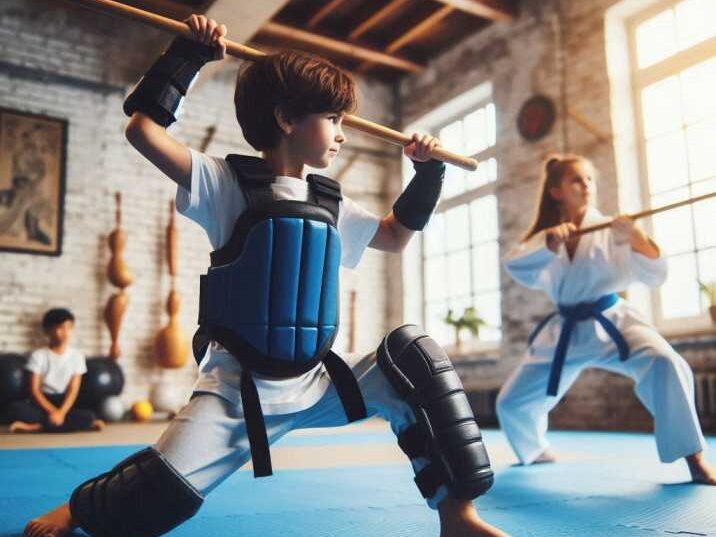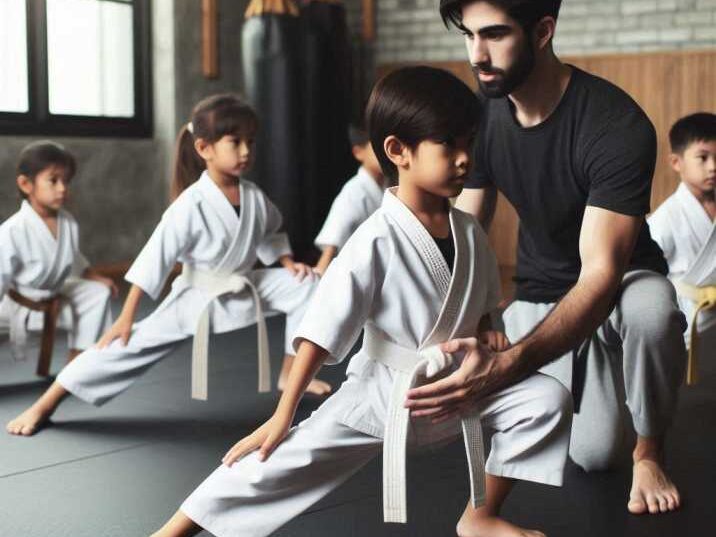Introduction
Table of Contents
Have you ever heard of Kali martial arts and wondered what it really is? Many parents know about karate or taekwondo, but Kali might sound less familiar. Yet, it’s one of the most fascinating and practical martial arts in the world.
Kali comes from the Philippines and focuses on sticks, knives, and empty-hand fighting. While it may seem intense at first, don’t worry—many schools teach safe, child-friendly versions that help kids build confidence, coordination, and focus.
If you’re a parent looking for the best martial art for your child, understanding Kali can open up a whole new perspective. This guide will break it down simply so you’ll know whether it’s the right fit for your family.

What is Kali Martial Arts?
Kali martial arts is a traditional Filipino fighting style. It is sometimes also called Arnis or Eskrima. Unlike some martial arts that focus mainly on punches and kicks, Kali teaches students how to defend themselves with weapons and empty hands.
- Origin: The Philippines
- Focus: Weapons (sticks, knives), self-defense, hand-to-hand combat
- Skills Learned: Awareness, agility, quick reactions, and coordination
For kids, Kali is usually taught with padded sticks and safe drills. Instead of focusing on fighting, the lessons highlight movement, respect, and discipline.
Benefits of Kali Martial Arts for Kids
Parents often wonder, “Why should my child learn Kali?” Here are some of the top benefits:
1. Improved Focus and Awareness
Kali drills move quickly, so kids have to stay alert and follow instructions carefully. This practice trains their brains to concentrate better, which can carry over into schoolwork and homework. Over time, children become more mindful of their surroundings and actions.
2. Better Coordination and Agility
Holding and moving sticks while practicing hand drills builds strong hand-eye coordination. These skills help children become more agile and balanced, making sports, dance, or even playground activities easier. It’s a fun way for kids to get active while learning control of their bodies.
3. Confidence and Self-Discipline
Each new technique learned in Kali gives children a sense of achievement. This builds confidence while also teaching patience, respect, and self-discipline. Kids quickly learn that progress comes from practice and focus, not shortcuts.
4. Practical Self-Defense Skills
Although kids won’t use real weapons, Kali teaches them how to react quickly and think smart in tough situations. They learn awareness, safe escape moves, and defensive techniques that can help if they’re ever bullied or threatened. It’s about staying safe, not fighting.
5. Cultural Appreciation
Kali is rooted in Filipino history, and kids get to explore this rich culture while training. This exposure broadens their worldview and helps them appreciate traditions beyond their own. For many children, it’s also exciting to say they’re learning a martial art that’s different from the usual karate or taekwondo.

Possible Risks or Concerns Parents May Have
It’s natural for parents to feel a little nervous about Kali since it involves weapons training. Here are some common concerns and how they’re addressed:
- Concern: “Is it safe for my child to use sticks?”
- Answer: Kids use padded sticks, and training is closely supervised.
- Concern: “Will it make my child more aggressive?”
- Answer: Just like karate or judo, Kali emphasizes respect, control, and discipline, not violence.
- Concern: “Is it too complicated?”
- Answer: Instructors usually adapt the lessons to age groups, starting simple and building skills gradually.
Safety Tips and Best Practices for Parents
If you’re considering enrolling your child in Kali martial arts, keep these safety tips in mind:
- Choose a Certified School
- Make sure the school has trained instructors who understand how to work with kids. Certified teachers know how to keep classes safe and age-appropriate. This helps your child learn correctly while avoiding unnecessary risks.
- Start with Trial Classes
- Before signing up long-term, let your child attend a few trial lessons. This gives them a chance to see if they enjoy the training and feel comfortable with the instructor. It also helps you evaluate the school’s environment and teaching style.
- Ask About Equipment
- Safety gear is a must in Kali, especially since it involves stick drills. Ensure the school uses padded sticks, helmets, and gloves for children. Proper equipment reduces the risk of injury and makes training both safe and fun.
- Encourage Respect at Home
- Remind your child that martial arts are not for rough play or showing off. Techniques should be practiced only in class or under supervision. Reinforcing respect at home ensures they use their skills responsibly.
- Stay Involved
- Kids thrive when parents show interest in their activities. Watching classes or even practicing simple drills together at home keeps children motivated. Your involvement also shows them that martial arts is about family support as much as personal growth.
Kali vs. Other Martial Arts for Kids
Parents often compare martial arts before choosing the best fit. Here’s a quick comparison:
| Martial Art | Focus | Best For | Risk Level |
|---|---|---|---|
| Kali | Weapons + hand drills | Coordination, focus, self-defense | Moderate (with safety gear) |
| Karate | Punches, kicks, kata | Discipline, confidence | Low |
| Taekwondo | High kicks, speed | Flexibility, fitness | Low |
| Judo | Throws, grappling | Strength, teamwork | Low |
Conclusion
So, what is Kali martial arts? It’s a unique Filipino martial art that blends weapon training, self-defense, and discipline into one exciting practice. For kids, it’s not about fighting—it’s about learning focus, respect, coordination, and confidence.
If you’re a parent looking for something different from the usual karate or taekwondo classes, Kali can be an excellent choice. With the right school, safe equipment, and supportive guidance, your child can grow stronger inside and out while exploring a martial art with deep cultural roots.
Encourage your child to try a class—you might be surprised at how much they enjoy the rhythm, flow, and fun of Kali martial arts.
FAQs About Kali Martial Arts for Kids
1. What age can kids start Kali martial arts?
Most schools recommend starting around ages 7–8, when children can follow instructions and safely handle drills.
2. Is Kali martial arts violent?
No. Kali is about discipline, awareness, and control. Kids are taught safety and respect above all else.
3. Do kids use real weapons in Kali?
No. They start with padded sticks or wooden trainers under strict supervision.
4. How is Kali different from karate or taekwondo?
Kali focuses more on weapons and flow drills, while karate and taekwondo focus on punches, kicks, and forms.
5. Will Kali help my child if they get bullied?
Yes, indirectly. It teaches awareness, confidence, and self-defense strategies that help children avoid or escape dangerous situations.


